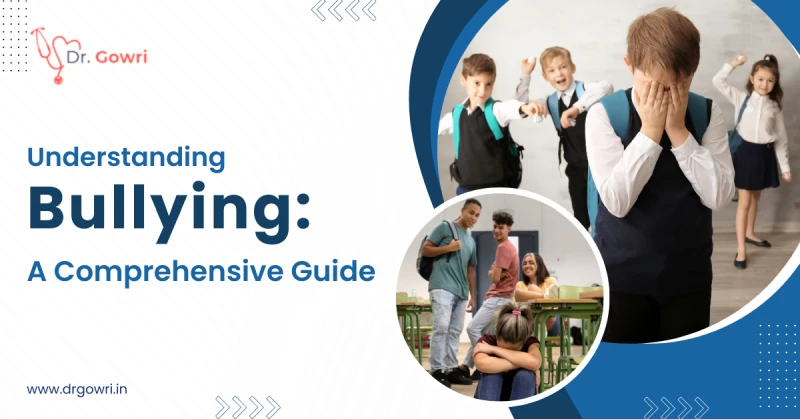“The only thing necessary for the triumph of evil is for good men to do nothing.”
– Edmund Burke
What is Bullying?
Bullying is generally defined as aggressive behaviour that involves unwanted, negative actions. It is a widespread issue that affects people of all ages in schools, workplaces, and online spaces. It includes actions like making threats, spreading rumours, attacking someone physically or verbally, and excluding someone from a group on purpose.
The Different Faces of Bullying:
- Physical Bullying: This is perhaps the most recognizable form of bullying. It includes hitting, kicking, pushing, or any kind of physical harm. And it doesn’t always have to be in person; it can happen in crowded hallways, classrooms, or even at home.
- Verbal Bullying: This involves using words to hurt someone. It can range from name-calling and teasing to threatening. Verbal bullying can leave deep emotional scars that can remain with an individual forever.
- Social Bullying: Also known as relational bullying, this is more about damaging someone’s reputation or social standing. It can involve exclusion from groups, spreading rumours, or embarrassing someone in public. It often leaves the victim feeling isolated.
- Cyberbullying:In our digital age, this form has gotten the spotlight. It includes any bullying that occurs through electronic means, like through social media, texts, emails, etc., The scary thing about cyberbullying is that it can happen 24/7, and sometimes it feels like there’s no escape.
Frequency of Bullying:
The 2022 School Crime Supplement to the National Crime Victimization Survey (National Center for Education Statistics and Bureau of Justice) indicates that, nationwide, about 19.2% of students ages 12-18 in grades 6-12 reported being bullied, with approximately 15.4% of students reporting being bullied with a power imbalance, 14.5% being bullied repeatedly, and 12.7% being bullied with both a power imbalance and repetition.
Who is at Risk?
Anyone can be a target of bullying, but some groups are at higher risk. Children with disabilities, those who identify as LGBTQ+, or anyone who is perceived as different are particularly vulnerable. However, bullying isn’t limited to school-age children. Adults can and do experience bullying at work, too.
Warning Signs for Bullying:
Many warning signs may indicate that a person is engaged in bullying either as a bully or a victim. Recognizing the warning signs is an important first step toward solving bullying. Not all bullies or children who are bullied seek help.
Recognizing the Signs of Being Bullied
- Sudden withdrawal from social activities or reluctance to go to school.
- Frequent complaints of headaches, stomach aches, or other unexplained illnesses.
- Unusual mood swings, increased anxiety, or signs of depression.
- Changes in sleeping or eating habits.
- Unexplained bruises, cuts, or damaged/missing belongings.
- Avoidance of certain places, people, or activities they previously enjoyed.
- Drop in academic performance or lack of focus in school.
- Secretive behaviour regarding online activities or excessive screen time.
- Signs of low self-esteem, such as self-blame or feeling unworthy.
Signs a Child is Bullying Others
- Displays aggressive behaviour at home, school, or in social settings.
- Lacks empathy and disregards others’ feelings.
- Gets into frequent fights or arguments.
- Has unexplained money, new belongings, or material items.
- Shows little remorse for their actions or blames others for problems.
- Tries to control others or dominate social situations.
- Is secretive about online activities or social interactions.
- Is highly competitive and concerned with popularity or social status.
- Has been previously disciplined for aggressive behaviour in school.
- Friends with others who engage in bullying or exclusionary behaviour.
Why do children not seek help?
Children do not report to adults for a variety of reasons:
- Bullying can make a child feel powerless. They may fear being weak.
- They can also fear being attacked back by the bullying child.
- Bullying is a painfully embarrassing experience. Kids may not want adults to know the ugly things said against them by others, although these may not be true.
- Children who are bullied may already feel isolated. They may believe that nobody cares for them or gets them.
Effects of Bullying
Bullying has serious and long-term effects on both the victim and the bully.
| Effects | Victim | Bully |
|---|---|---|
| Emotional & Psychological | Anxiety, depression, low self-esteem, suicidal thoughts | Increased aggression, risk of conduct disorders, possible depression |
| Social Impact | Isolation, difficulty making friends, social withdrawal | Trouble forming healthy relationships, peer rejection |
| Academic & Career | Poor school performance, absenteeism, lower achievements | Poor academic performance, higher dropout rates, difficulty maintaining employment |
| Physical Health | Sleep disturbances, headaches, stress-related illnesses | Potential stress-related issues but often unnoticed |
| Long-Term Consequences | Risk of PTSD, trust issues, ongoing mental health struggles | Higher likelihood of criminal behaviour, substance abuse, and domestic violence |
For Bystanders:
Kids who witness bullying are more likely to:
- Have increased use of tobacco, alcohol, or other drugs.
- Have increased mental health problems, including depression and anxiety.
- Miss or skip school.
Ultimately,
Bullying is a serious social issue that affects both victims and perpetrators, leading to lasting emotional, psychological, and social consequences. We must remember that we all have a part to play in preventing and combating bullying. Little things, standing up for others, and educating young people about respect and inclusion can make a difference and make the world a better place.
About the Author

Dr. Gowri Ravi Chinthalapalli is a Developmental and Family Physician with over 16 years of experience in child development and family medicine. She has treated more than 50,000 patients worldwide. After completing her MBBS from Rajiv Gandhi University of Health Sciences, she pursued MRCGP from the UK and gained wide experience in primary care and emergency medicine. She also holds a Fellowship in Child Development from the Centre for Child Development and Disabilities, Bengaluru. Dr. Gowri currently practices at Aster CMI Hospital and Canara Diagnostic Centre, Bengaluru. She is passionate about guiding families, supporting children with developmental needs, and providing holistic care.

